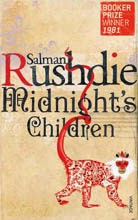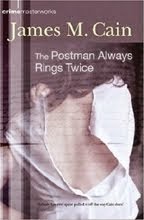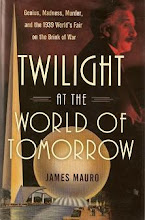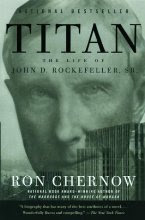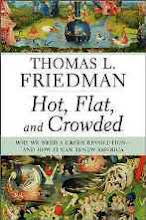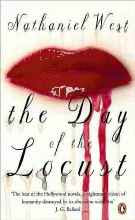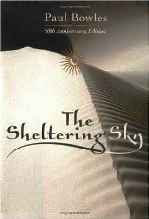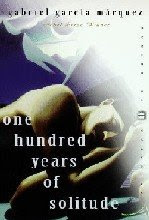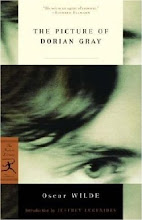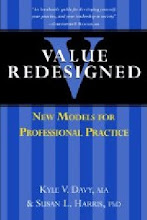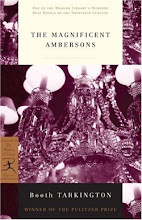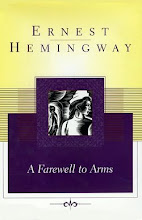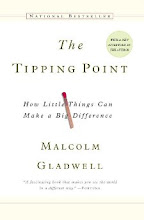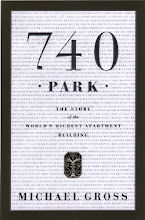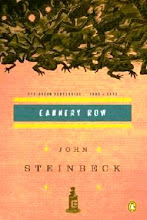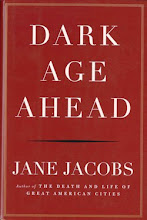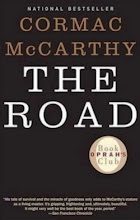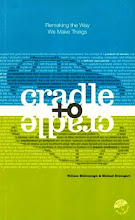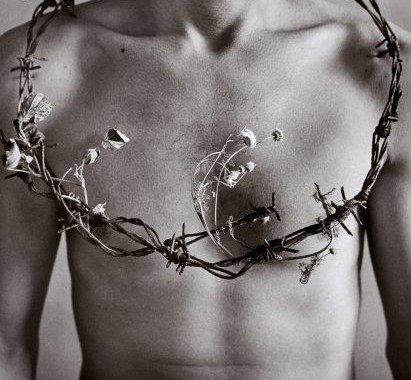Sir Arthur Conan Doyle
On occasion when traveling circumstances overlap and I find myself immersed in a totally unexpected invocative experience. The variables of time and space coincide with random probability and I am swept away in rituals which I would remotely consider to seek out. Surprisingly these experiences always seem to have a catalyst which provides a unique lens to view life through sort of a guide if you wish. As it happened the catalyst for this discovery was the stranger I was seated next to in a Sushi Bar after a long and boring cross county flight.
One of my travel rituals which provide a modest feeling of routine and security is to check into the hotel in the late afternoon and take an early evening walk to discover the urban fabric and pulse of the city which I’m visiting. It doesn’t matter if I’ve visited the city once or one hundred times I discover a more granular understanding of the culture by taking to its streets as the neighborhood changes from day to night. Many times I can find a simple open air street café to sit and observe the choreography of daily life unnoticed and anonymous. This day found me in the older Gaslamp District of San Diego, as I was particularly drawn to a gourmet sushi restaurant. The allure was based in the knowledge that I was in a seaport known for its fresh seafood with a large resident population of Japanese. If you have not tried sushi you have missed one of the great cuisines of the world. It’s purity and simplicity is unmatched. Americans especially Midwesterners would do well to overcome the fear and revolution of raw fish and give this century old understanding of the sea and food a chance.
I had once quipped that if there was one cuisine I had to choose to eat everyday for the rest of my life it would be sushi, and as fate had it I almost did. After my wife left the hospital from her ruptured brain aneurysm she had lost her appetite for all food and did not want to eat anything. She was shedding weight at an alarming rate and struggled to add any caloric value to her body which panicked me. I tried cooking bland, cooking wholesome, cooking healthy foods and recipes. I tried cooking all the food items she had loved before. We tried a range of different ethic favors to stimulate her palette; all my attempts were to no avail until we went to a sushi restaurant a short distance from the house. For some reason the pure simple flavors of sushi appealed to her which began our journey of eating sushi six days a week for over six months without a break. You would think that this would result in cruel and inhuman treatment but in reality I enjoyed and looked forward to each meal, in fact it only deepened and broadened my respect and love of sushi.
As I was sitting at the sushi bar ordering some exotic seafood items which are hard to obtain in the Midwest, a gentleman in his early thirties was seated next to me. It was apparent that he was not extremely conversant in sushi and began asking a number of simple questions which are fundamental if you eat a lot of sushi. Detecting what I thought was an Australian or New Zealand accent I struck up a conversation to make sure his early sushi experience most memorable. As it turns out he was not from down under but had just landed from Tel Av for his first night in the states. The conversation turned toward his reason for visiting San Diego which was to go free diving with the sharks in the Sea of Cortez inland of the Mexican Baja. It was fascinating to have such an unexpected dialogue on the art of free diving without mechanical supports to depths of 90 meters below the surface or assisted diving with a weighted sled to depths of 190 meters underwater. The conversation meandered though the risks, techniques, history and sensations. For the past decade he has been honing his skills for free diving and was capable of holding his breath for almost six minutes. Surprisingly the trick to be successful at this sport was to displace all fear and relax to reduce the consumption of oxygen and if perfectly relaxed your body begins to stop fighting the reflexes of drowning and death. Only by overcoming anxiety can the mind trick the body to survive the temptation with death. Curious about how one could counteract the bends upon such a deep decent, I was informed that since a free diver is only utilizing a single breath of air, the bends is not a problem, although the sport required an extended rest period between dive trips so the body could recover.
Engaged in conversation the sushi bar was oriented close to the open air patio which fronted the street and provided an expansive view of the activities of the adjacent sidewalk though floor to ceiling glass storefront windows. While the street was crowded earlier with people shuffling past shoulder to shoulder it didn’t seem unusual for a Saturday night in the trendy districts of any city, but the scene was changing fast. Our free diving conversation was disrupted by an increasing commotion of screams and howls on the street. All of a sudden the electronic game hero Mario darts by the window followed by a dude dressed up as a banana. Not necessarily a common event, when I realize that this is the Saturday before Halloween when the doors of hell open up and every character imaginable tumble onto the street. Within a moments notice and with great energy the street transforms into a Fellini version of the back lot at MGM Studios.
With only the smallest regard toward social structure or decorum nuns begin to mingle with street whores, super heroes pass wild animals from mythical worlds, pirates swing swords at Egyptian pharos, while angels with translucent snow white wings flit around criminals in black and white strips. The sushi bar glass façade is transformed into an incoherent sequence of nightmarish film clips of every horror movie and television show imaginable. Violent and absurd images flash before us in delusional chaos as if the mind has slipped into a psychotic mental illness. My new found friend from Tel Av is engaged in the circus and delights in the social madness. He turns back to me noting something I was completely unaware of, “you know Halloween or getting dressed in costume is uniquely American, no one else really celebrates this holiday around the world.” Yes there are many other festivals and celebrations around the world in which the public flock to the street in costume like Carnival in Rio, Masquerade in Italy, or the Day of the Dead in Mexico, but none with the abandon of Halloween.
Staring at me with eager brown eyes he asked, “So what is the origin of American Halloween?” and for the life of me I didn’t know. Something about All Hallows Eve, I couldn’t recall. How could a foreigner ask such a fundamentally American question and I was so clueless? It was something I felt was as simple as who George Washington is or who won the Civil War? I was in danger of having my citizenship revolved or at least being remanded to a remedial Americana class at the local VFW. For a person who has been interviewed hundreds of times on many topics I was barely conversant in I am seldom at a loss for words, but I was stumped by the most elemental inquiry of cultural lore. Without waiting any further for an answer my new friend paid his bill and disappeared into the swelling madness of the night.
My pensive reflection was shaken by an especially large series of shrieks and howls from the street as a roaming mob of thirty to forty zombies cruised by. Deciding that the origin of my question resided in the madness of the street I settled my bill and took to the crowds only to discover that there were not just one zombie mob controlling the district but a number of different competing zombie mobs vying for control of the night, each more bloody and gruesome than the other. By this time the streets were packed and independent directional movement became an effort. Although there were thousands of other characters clamoring for attention it was the zombies which intrigued me the most. I was interested in which was the most creative zombie, the zombie wedding couple in gown and tuxedo, the zombie cheerleading squad, the zombie fat guy with a zombie bulldog, the zombie army squad or zombie nerds, which were really scary. No the most outrageous scary group were the zombie clowns. To begin with there are just sometime spooky wrong about clowns, but mindless bloody zombie clowns were over the top.
For the next three hours of wandering the street, yes like a zombie, I tried to stick close to angels or nuns for divine protection just in case I ran into that roaming crowd of zombie clowns again. What had begun as a somewhat boring, uninteresting start to a business trip had exploded into a riot of adventure and discovery in the world of the weird dead. There began to develop a trend with the movement of the crowd which started as a low pulsing drone as the crowd turned a corner, but I could tell the zombies were seeking a common goal as each began to rise in intensity as each block passed, until around a final turn the street erupted into flashing lights and pounding beats of dancehall music. It turned out to be one of the largest block parties I’ve attended. Like a new world explorer I was able to find the zombie nest, the center of zombie culture, the capitol of weird. Apparently zombies are proud of their little neighborhood because I had to fork over $35 in order to become a temporary resident of Zombieville, a small price to pay to experience zombie party central in all its glory.
If I had thought that the street scene was weird, the block party was where the inmates were running the asylum. They had erected various tall multi-story scaffolding of party decks, blaring loudspeakers and rotating color search lights all covered in half naked zombie go-go girls. A dancing zombie go-go girl is beyond my ability to describe in written word, somewhere between a slow motion spasm and a full on seven martini druck. I’ve never been to a street party which had three levels so the really weird could watch the ultra weird from the privacy of their own go-go cage. It was a little difficult to orient myself but I believe the block party covered about four blocks or at least enough room to create a circular track to cycle around. I did notice that the circular rotation of the pulsing crowd reminded me a bit of the religious throngs of Mecca, no disrespect intended, but I can’t recall of another experience where crowds of people packed tightly revolve in large circles.
Since there were so many zombies of different persuasion and walks of life I began to assume that a middle aged white guy in a neutral colored sports jacket was equally as weird and shocking to the zombies. There was one lone zombie protesting the other zombies with a sign which stated “1% of zombies control 99% of zombie brains…Unfair”. I think there was a dim recognition of the unfair situation from some of the other zombies, but I’m pretty sure that in due course the zombie leadership was about to haul our protester into a special zombie control center for brain reprogramming or whatever they do to punish wayward zombies. In other words I think his free thinking zombie days were coming to an abrupt end.
After a while, not wanting to sound racist or exhibit overt prejudice, but all the zombies began to look alike. The same blackened eyes, that pasty grayish white skin tone, the common ratio of blood splatter and rivulets on exposed skin and the single defining head wound all began to blend together. The long day of travel and the excitement of secret discovery increased my level of fatigue. A cardinal rule of travel for me was invoked, which is if you can’t get your fill of drink, food and song by midnight, give up. I have discovered in my decades of travel that nothing of greater accomplishment happens after midnight, except for the greater physical and mental toll extracted the following day. So without notice by the howling hordes of zombies, I discretely make my way back to the hotel, ready to survive for another day.
Unfortunately my adventure into the night never did answer my burning question as to what is the origin and meaning of Halloween. So I undertook a classic research model and did what any confident research assistant would do and looked it up on the internet. Here is a short history of Halloween which has to be the gospel truth because I found it online at halloween-history.org. Enjoy the richness of the holiday.

“Halloween is a holiday with ancient roots that had a much greater meaning than the boisterous, costume-filled holiday that we know today. Around 2,000 years ago, the Celts, who lived in what is now the United Kingdom, Ireland, and northern France, had a festival commemorating the end of the year. Their New Year was November 1, and this festival was called Samhain, pronounced sow-en. The end of their year signaled the end of summer, the end of the harvest season, and the beginning of a long, hard winter that often caused many deaths of animals and people. Weaker livestock were often killed and eaten during this holiday, since most likely, they would not survive the winter anyway. Because of this, and the cruel winter to come, this time of year signified death to the Pagan Celtics. They believed the night before the New Year, that the wall between the living and the dead was open, allowing spirits of the dead, both good and bad, to mingle among the living. Some of these spirits were thought to possess living people, cause trouble, ruin crops, or to search for passage to the afterlife.
Samhain was considered a magical holiday, and there are many stories about what the Celtics practiced and believed during this festival. Some say the spirits that were unleashed were those that had died in that year, and offerings of food and drink were left to aid the spirits, or to ward them away. Other versions say the Celts dressed up in outlandish costumes and roamed the neighborhoods making noise to scare the spirits away. Many thought they could predict the future and communicate with spirits as well during this time. Some think the heavily structured life of the Pagan Celtics was abandoned during Samhain, and people did unusual things, such as moving horses to different fields, moving gates and fences, women dressing as men, and vice versa, and other trickeries now associated with Halloween. Another belief is that the Celtics honoured, celebrated, and feasted the dead during Samhain. A sacred, central bonfire was always lit to honor the Pagan gods, and some accounts say that individual home fires were extinguished during Samhain, either to make their homes unattractive to roving spirits, or for their home fires to be lit following the festival from the sacred bonfire. Fortunes were told, and marked stones thrown into the fire. If a person's stone was not found after the bonfire went out, it was believed that person would die during the next year. Some Celts wore costumes of animal skulls and skins during Samhain. Faeries were believed to roam the land during Samhain, dressed as beggars asking for food door to door. Those that gave food to the faeries were rewarded, while those that did not were punished by the faeries. This is reported to be the first origin of the modern "trick or treat" practice. (If you're looking for halloween costumes, check out discount halloween costumes for great deals.)
In the First century A.D., the Roman Empire had taken over most of the Celtic lands. The Romans had two festivals also celebrated at the same time of year as Samhain. One was Feralia, also in late October, was the Roman day honouring the dead. The second festival was for Pomona, the Roman goddess of trees and fruit. Pomona's symbol was the apple. These two festivals were combined with Samhain in the Celtic lands during the four hundred years the Roman Empire ruled over the Celts. The goddess Pomona's apple might be the root of the Halloween tradition of bobbing for apples.
Over the next several hundred years, Christianity had spread to include the lands inhabited by the Celtics and the Romans, but the festival of Samhain was still celebrated by the people. The Christian church reportedly did not like a festival with Pagan roots practiced by Christians, so a replacement was needed. Pope Boniface IV designated May 13 as All Saints Day to honour dead church saints and martyrs. Samhain continued to be celebrated, so in 835 A.D., Pope Gregory IV moved the holiday to November 1, probably to take attention away from the Pagan Samhain festival and replace it. Since All Saints Day was sanctioned by the church, and related to the dead, the church was happy, but many Pagan traditions of Samhain continued to be practiced, including bonfires, parades, and dressing up in costume.
All Saints Day was also known as All Hallows, or All Hallowmas (Hallowmas is Old English for All Saints Day). Since Samhain was celebrated the night before November 1, the celebration was known as All Hallows Eve, and later called Halloween. In the year 1000 A.D., the church designated November 2 as All Souls Day, to honour the dead who were not saints, and they eventually became combined and celebrated as Hallowmas.
On All Souls Day in England, the poor would "go a-souling". They would go door to door asking for food, and in return, would pray for the souls of their dead relatives. It was widely believed at the time that the souls of the dead would await passage into heaven until enough people prayed for their souls. The Christian church encouraged this practice to replace the old Pagan tradition of leaving cakes and wine out for the spirits of the dead. The poor would be given "soul cakes", which were pastries made for those who promised to pray for their dead relatives. In some cultures, soul cakes would be given in exchange for a performance or song as well. Children eventually adopted this practice, and were given food, ale, or money.
Jack o'lanterns are a Halloween staple today, with at least two historical roots.
The early Pagan Celtic peoples used hollowed out turnips, gourds, or rutabagas to hold an ember from the sacred bonfire, so they could light their home fires from the sacred bonfire. Another tale from folklore gives jack o'lanterns their name. In Irish myth, a man known as "Stingy Jack", who was a swindler and a drunk, who asked the devil to have drink with him. Jack convinced the devil to change himself into a coin so he could pay for the drink, but Jack put the coin in his pocket next to a silver cross, which trapped the devil, preventing him from changing himself back.
Jack agreed to free the devil on the condition that the devil would not bother Jack for a year. Next year, Jack tricks the devil into climbing a tree to fetch a piece of fruit. While the devil is up the tree, Jack carves a cross into the trunk, preventing him from climbing back down the tree. In order to get out of the tree, the devil promised Jack not to seek his soul any more. When Jack died, he was not allowed into heaven, because of his drunken and swindling ways, but he was not allowed into hell either, because the devil kept his word. Taking pity on Jack, the devil gave him an ember to light his way in the dark, putting it into a hollowed out turnip for Jack to carry on his lonely, everlasting roamings around the Earth. People from Ireland and Scotland would make "Jack o'lanterns" during this season to scare away Stingy Jack and other evil spirits wandering about.
Over the next several centuries, superstitions about witches and black cats were added to to the folklore and legends of Halloween. Cats were thought of as evil, especially black cats, and were killed by the thousands in Medieval times, possibly contributing to the Black Plague, due to the shortage of the rat's natural enemy, the cat. During this time, the church created the belief that evil witches existed.
In the 1500's, Martin Luther created the Protestant Church, which had no saints, so no All Hallows Day was allowed. On November 5, 1606, Guy Fawkes was executed for attempting to blow up England's Parliament. Fawkes, along with an extremist Catholic organization he belonged to, wanted to remove the Protestant King James from his throne. The English wasted no time to have a celebration to replace All Hallows Day, so Guy Fawkes Day was celebrated from then on. Many traditions of All Hallows Day were practiced, such as bonfires, and children asking for money, but the reasons why were different. Bonfires were known as "bone fires" originally, because they were lit in order to burn an effigy of the Catholic pope, burning his "bones". Two hundred years later, the effigy of the pope was replaced by an effigy of Guy Fawkes, prompting children to go door to door, asking for a "penny for Guy", so they could make their effigy to burn. In the New World, the colonists celebrated Guy Fawkes Day for a while, but as the colonies became the United States of America, Guy Fawkes Day fell by the wayside.
In the United States
Halloween was not a popular observance in early United States history, as most of the early settlers were Protestant. At the time, Halloween was considered mostly a Catholic, Episcopalian, and Pagan holiday, and therefore largely ignored. In the southern colonies, such as Virginia and Maryland, there were some Halloween customs observed. The first common events were called "play parties". These parties got neighborhoods together to celebrate the harvest, dance, sing, tell stories of the dead, tell fortunes, and have pageants for children in costume. By the mid 1800's, immigration increased, and many Irish immigrants, mostly Catholics fleeing the potato famine, brought many Halloween traditions with them. Jack o'lanterns found a new face, the pumpkin, which was very plentiful in the New World. Catholics and Episcopalians sought to preserve their traditions, so started an effort in the late 1800's to popularize and make their holidays known to the general population. By campaigning to put these holidays (Halloween and All Saints Day) on public calendars, magazines and newspapers started to publicize these holidays, and soon became popular in the United States more as a community and family holiday, rather than one of great religious and supernatural importance.
By the mid twentieth century, Halloween turned into a secular holiday, community centered with parties city-wide, parades, and great costumes. Halloween is mostly aimed to children, but young and old enjoy this holiday, with events and parties for both children and adults. Starting in 1950, the United Nations Children's Fund (UNICEF) started a campaign for children to collect money at Halloween for underprivileged children around the world. Halloween is the United States' second largest commercial holiday, spending approximately $6.9 billion a year.
In Other Countries
Mexico, Latin America, and Spain observe All Saints Day and All Souls Day with a three day celebration starting on the evening of October 31, through November 2. In most areas of Mexico, November 1 is set aside to honour dead children, and November 2 to honour those who died as adults. Starting in mid October, shops are filled with decorations, flowers, toys made like skeletons and other macabre shapes, sweets, pastries, and candies shaped like bones, coffins, and dead bodies in preparation for the festivities. Called "Day of the Dead", the spirits of relatives are supposed to visit their families homes. An area of the home is cleared away, and an altar is erected decorated with flowers, photographs of the deceased, candies and pastries shaped like skulls inscribed with their name, candles, and a selection of the deceased's favorite foods and drinks. Even after dinner cigarettes and liquors are provided for the dear departed's after dinner enjoyment. Incense is burning to help the spirits find their way home.
In preparation for November 2, the graves of the deceased are cleaned, painted, and decorated for the occasion. Families gather November 2 for a festive family reunion. Food, drinks, and tequila are brought along, along with sometimes even a mariachi band. In some areas, fireworks announce an open-air mass, the most solemn time of the Day of the Dead. Many customs vary depending on the particular city, town, or culture, but all over Mexico, Latin American, and Spain, the Day of the Dead is considered a celebration of their departed family.
Eastern Europe's celebration of All Saints Day are usually spent by praying most of the day, praying to the Saints and thanking God. Often, they visit their departed family members at the cemeteries. Slovakia, Hungary, Lithuania, Slovenia, and Poland observe All Saints Day as a public holiday, but unlike Mexico and the United States, this day is a somber day of remembrance and reflection. France, Italy, and Germany are celebrating Halloween, American style, as does Canada. Ireland celebrates American style, but a common town bonfire, a remnant of Celtic days is still lit. England still celebrates Guy Fawkes Day on November 5 with bonfires, burning effigies of Guy Fawkes, and fireworks.
Halloween Traditions
Costumes: Dressing in costumes has its roots in the Pagan Celtic roots of Samhain. One theory is they dressed as ghouls to fool evil spirits let loose on October 31, so they would not be possessed by these spirits. Another theory is they dressed in costume just for fun, and to make mischief. Yet another theory is that faeries would dress as beggars asking for food, which would also be the origins of the "trick or treat" practice. After the Catholic Church replaced Samhain with All Saints Day, people would dress as dead Saints and devils for their festivities.
Trick or Treat: This practice might have had it's start in the legend from Celtic days that faeries would dress as beggars going from door to door asking for food, and those that did not show hospitality would be harshly dealt with by these magical faeries. On All Souls Day, the poor would beg for "Soul Cakes" (sweet pastries) in exchange for prayers for their departed loved ones, expediting their passage to heaven. Sometimes costumed groups would sing and perform in exchange for food, ale, or money. In the United Kingdom, Guy Fawkes effigies to be burned were prepared by children, going door to door, asking for a penny for Guy, on Guy Fawkes Day.
Bonfires: These have two origins. The first is the sacred ritual of extinguishing home fires, and one sacred bonfire is lit in each town for the end of the New Year. Some say the reason home fires were extinguished is to scare away evil spirits from homes, while others say that home fires were supposed to be lit from embers from the sacred bonfire to start the New Year. The second origin was from Guy Fawkes Day in the United Kingdom to burn effigies of the Catholic pope, and later of Guy Fawkes himself.
Apples: A seasonal fruit, and also the symbol of the Roman goddess Pomona, commonly thought at the time to possess qualities of knowledge, resurrection, and immortality. Bobbing for apples, peeling a long apple peel, and other manipulations of the fruit were thought to foretell the future, on this night of Samhain.
Jack o'lanterns: From the Irish folk tale of Jack, who tricked the devil, but was not allowed in heaven or in hell. The devil, taking pity of Jack, gave him an ember to light his way on his eternal walks on Earth, carried in a hollowed out turnip. Because of their size and availability, pumpkins were substituted for turnips in the United States. The Celtics did use a hollowed out rutabaga to carry an ember from the sacred Samhain bonfire home to light their home fires, but the significance and relation to the Irish tale of Jack is unknown.
Ghost Stories: Ghost stories probably have their roots in the original Celtic belief that the spirits of the dead (both good and bad) wandered the Earth on October 31 (Samhain). Later, when the church replaced Samhain with All Saints Day and All Souls Day, the dead were remembered, and spoken about. In the United States today, they are used to amuse and scare children (and some adults) to get them in the "spirit" of Halloween.
“The oldest and strongest emotion of mankind is fear, and the oldest and strongest kind of fear is fear of the unknown.”
H P Lovecraft




